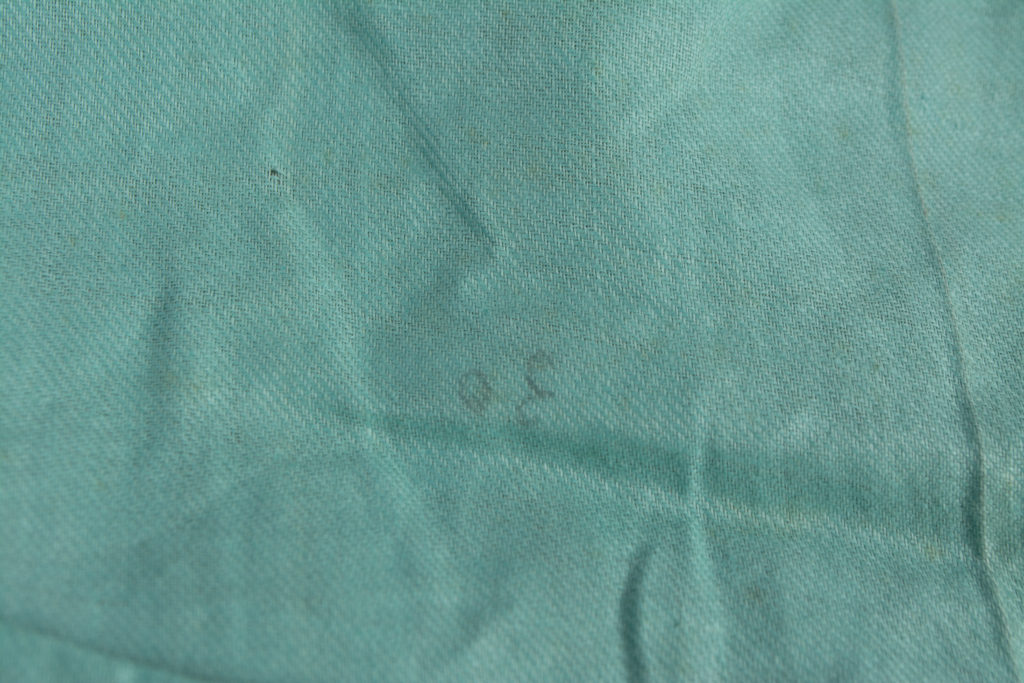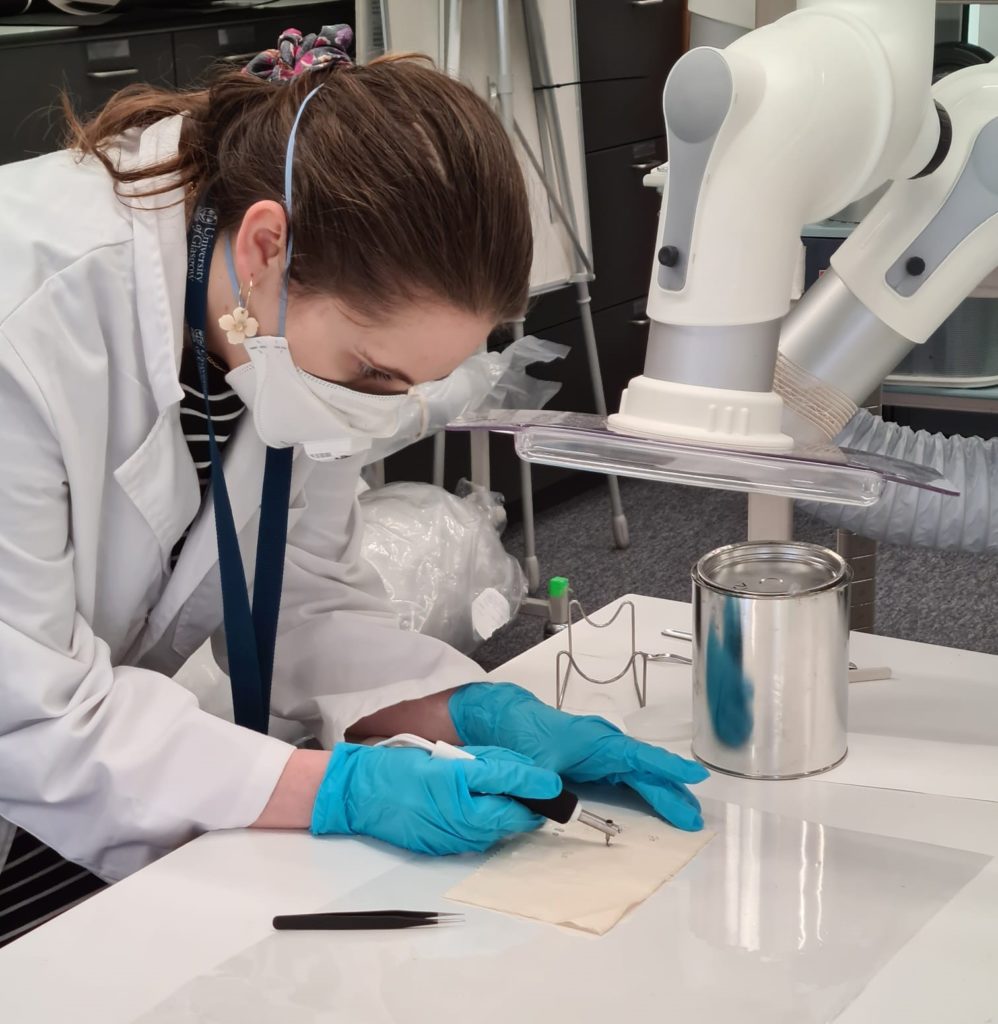
By Tabby Gibbs, First Year Student, MPhil Textile Conservation
In the second semester, first year students are allocated two historic textiles to document and conserve. It was a really busy term and we covered so many new methods that I wanted to take the opportunity to step back and reflect on one particular technique that was completely new to me. The technique involves applying a substance called cyclododecane (CDD) to protect a surface feature on a textile during wet cleaning treatment.
The second object I treated in semester two, was a late nineteenth century child’s coat. It is a pale green single-breasted coat with a blue lining, pale gold braiding and a large, almost cape like, collar. Underneath the back of the coat collar, there is a written number ‘30’ in what appears to be pencil. There was no obvious indication of what the number could mean; it could have been a mark made from historic curation, or even denote the amount the original cost of the blue cotton the twill fabric. Because the number could be evidence of the object’s history, the decision was taken that it should be protected as much as possible during the wash bath. As it was quite small (around 5mm wide), it was difficult to test whether it would withstand submersion, so additional shielding was felt to be the best course of action.


CDD was chosen as it is a volatile binding media which could be applied directly over the area to protect the number and would later sublime away[1] (change directly from a solid to a gas). It comes in the form of solid crystals and in textile and paper conservation is usually applied using an electric kitska, a tool traditionally used to apply wax, for wax-resist dyed Ukrainian Easter egg decorations. The kitska can be heated and the CDD is melted into the tip[2]. It was quite difficult to use, and I spent quite a bit of time practicing prior to applying it onto the coat. I found that the temperature had to be sufficiently hot to melt the CDD fast enough to apply without becoming lumpy, which would not stick well enough to form a waterproof layer. Eventually, I felt confident enough to apply it over the number on the coat. It worked really well to protect the number during wet cleaning, and when I checked it a week later the CDD had completely disappeared.

CDD application is a really interesting technique, and in the wider conservation sector, it is used for a variety of different tasks. The scope of applications is really well represented in the online book ‘Subliming Surfaces: Volatile Binding Media in Heritage Conservation’, a fantastic and freely available resource which brings together 22 papers and posters that were presented at the conference of the same name in Cambridge in April 2015. In textile conservation, it is used to prevent fugitive dyes bleeding, or protect things such as signatures or contextually important staining or modifications[3] as in this case. Other interesting applications in textile conservation have involved using it as a barrier during bleaching treatments[4].
Despite these exciting possibilities, CDD use is still relatively under investigated in conservation. There are many unknowns surrounding how long it takes to sublime, and whether it leaves a residue behind after the fact. Another concern, is that not much is known about the dangers of CDD to health. The research points to it not being harmful[5], however it is still recommended that it is used with precautions, and when I applied it I made sure to utilise portable extraction.
Overall, I found CDD worked really well for my purposes, and it is definitely a process I will be keen to experiment with in future treatments.
[1] Sophie Rowe and Christina Rozeik, “The uses of cyclododecane in conservation,” Studies in Conservation 53, no. 2 (2008): 17.
[2] Salvador Muñoz-Viñas, Vivancos-Ramón, Victoria and Ruiz-Segura, Pascual, “The Influence of Temperature on the Application of Cyclododecane in Paper Conservation,” Restaurator. International Journal for the Preservation of Library and Archival Material 37, no. 1 (2016): 29 https://doi.org/10.1515/res-2015-0013.
[3] Joanne Hackett, “Cyclododecane: Practical Applications in Textile Conservation,” in Subliming Surfaces: Volatile Binding Media in Heritage Conservation, edited by Christina Rozeik, University of Cambridge Museums (2018): 73-81.
[4] Yadin Larochette, “Determining the efficacy of cyclododecane as a barrier for a reduction bleaching treatment of a silk embroidered linen napkin,” The Textile Speciality Group Postprints, American Institute for conservation of Historic and Artistic Works Annual Meeting (32) Washington D.C. (2004): 1-10.
[5] Martin Adlem, “Cyclododecane: how dangerous is it?” in Subliming Surfaces: Volatile Binding Media in Heritage Conservation, edited by Christina Rozeik, University of Cambridge Museums (2018): 69-72.

